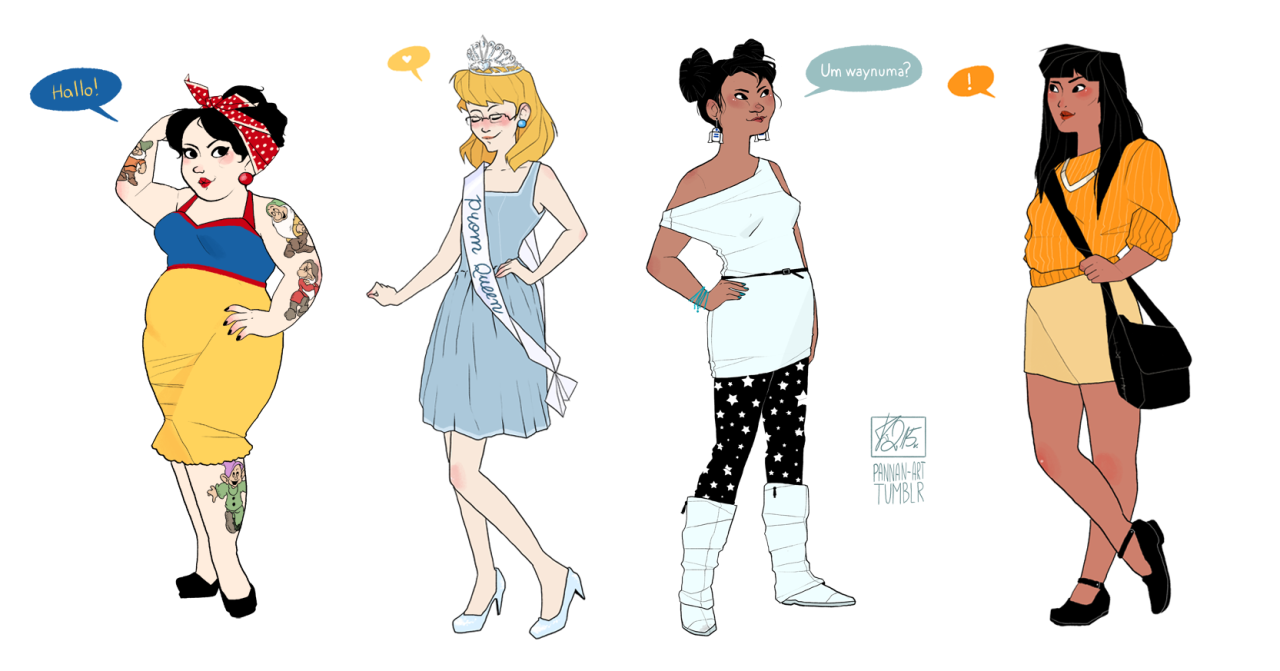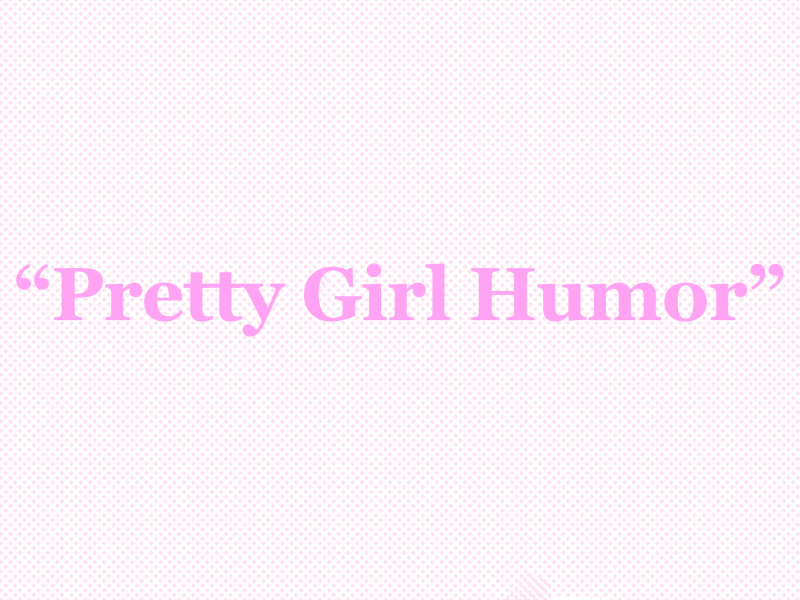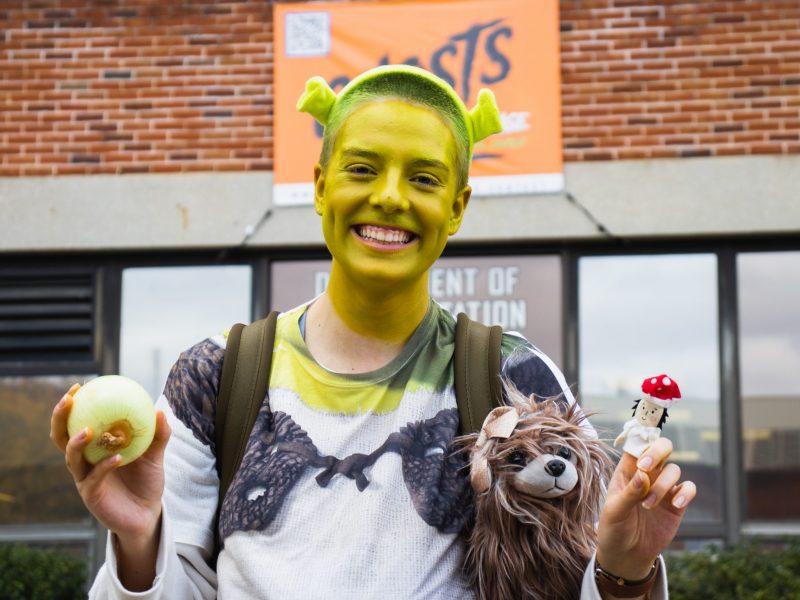By Aria Pham / For The Diamondback
Disney princesses are some of the most recognizable women in the world. With films translated into countless different languages, their prominence has inspired artists from around the world. But instead of embellishing them in their fairy tale grandeur, some artists take a more activist approach, using the iconic status of the Disney princesses to comment on issues like overfishing, negative body image and domestic and sexual violence.
Ariel Becomes Catch Of The Day
Almost anyone who has watched The Little Mermaid can remember the scene where Ariel falls in love at first sight. Despite the presence of other humans on the ship, she took the risk to observe Eric as he played the “snarfblat.”
Putting the original story line aside, imagine a blood-thirsty fisherman seizing the opportunity to aim his harpoon gun at the distracted mermaid. With the human prince as the perfect bait, the harpoon’s spear makes a clean kill. Moments after reeling in his catch of the day, the fisherman proudly holds up his brand new trophy: Ariel. This is the kind of mental imagery that Belgian artist MONK hopes to inspire in fans of his art, explaining that overfishing has become unreasonably common in modern day society.

Photo courtesy of MONK.
“Fisherman are catching tuna, sharks and whales faster than they can replace themselves,” he said. “If overfishing continues, the fishes will become just like mermaids in the near future: non-existent!”
Like Ariel’s love for life on land and under the sea, MONK said he hopes his message of valuing all lives gets across through a familiar character like her.
Modern Disney Princesses
Despite their widespread popularity, Disney princesses do receive some criticism for their appearances. Since the release of its first fully animated film Snow White and the Seven Dwarfs in 1937, Disney has only featured thin princesses.
Polish comic book artist Katarzyna Witerscheim, also known as PannaN, said Disney princesses don’t make good representations of real women and girls.
“One of my reasons for creating my ‘Modern Disney Princesses’ series is because I am opposed to acknowledging a single body type,” Witerscheim said. “Disney set a standard of physical attractiveness by continuously producing thin princesses. My other reason is because I was disappointed in the reimagined work other artists produced. I don’t see creativity in drawing different clothes on the same body.”

(Photo courtesy of Katarzyna Witerscheim)
The Disney princesses in Witerscheim’s series look considerably different from their original counterparts — like Snow White’s transformation into a voluptuous modern-day pinup. Maintaining her jet-black hair, apple-red lips and (of course) her snowy white skin, she sports a knee-length bodycon dress in her signature colors: red, blue and yellow. Accessorized with a pair of red earrings and red polka-dotted bandana, she contrasts with a pair of black ballet flats and black fingernail polish. With her beloved dwarves tattooed on her body, she confidently poses with one hand behind her head and the other on her hip.
“My Disney princesses are confident in displaying their personal style in their normal bodies” she said. “If they can influence young minds like the originals, then perhaps embracing diversity would be more popular than thoughts of conforming to unrealistic standards.”
Happy Never After and Princest Diaries
In today’s society, we are so surrounded by posters and ads encouraging us to buy various products, that ignoring such things has become easy. But it’s hard to ignore posters with a beaten-up Disney princess trying her best to muster up a smile for the public.
A Syrian artist who goes by the pseudonym Saint Hoax, used this idea to create two similar awareness campaigns featuring Disney princesses.
“They’re so easily recognized,” Hoax said. “I used their popularity to draw attention to real issues.”
He named one of his campaigns “Happy Never After.” In this series, he illustrates Ariel, Cinderella, Aurora and Jasmine with bruises, blood and open-cuts as a result of domestic violence. Each poster captions, “When did he stop treating you like a princess? It’s never too late to put an end to it.”
Portraying Disney princesses as victims demonstrates that domestic and sexual violence does happen to perceivably ideal women and girls, he said.
“They belong to a fairytale land where happy ever afters are bound to happen,” he said. “But what happens after the happy ever after? I’m proposing the idea that no woman or girl is safe from being emotionally, physically and sexually abused.”

(Photo courtesy of Saint Hoax)
He named the other campaign “Princest Diaries.” In this series, he illustrates Aurora, Ariel and Jasmine uncomfortably kissing their respective fathers. Each poster captions, “46% of minors who are raped are victims of family members. It’s never too late to report your attack.”
Although “Princest Diaries” received mixed reactions due to its shock factor, Hoax said he has received emails from victims thanking him for his campaign.
“I created ‘Princest Diaries’ when I discovered the father of one of my closest friends raped her at the age of seven,” he said. “Because it happened to someone so dear to me, I can’t help but cry when victims tell me they reported their cases because of my posters. These occurrences drive me to voice out the injustice and inequality happening to women and girls around the world.”



